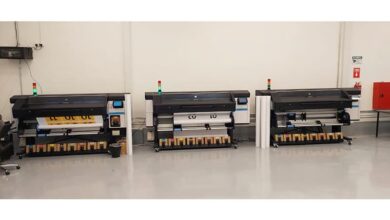HP Eyeing Big Move In 3D Printing
When 3D printing came out of laboratories a few years ago, it was widely touted as a revolution that would change everything from construction to manufacturing and medicine. It would decentralise the production process and put it in the hands of the consumer directly. Companies like Stratasys (SSYS) and 3D Systems (DDD) launched commercial 3-D printers and their stocks performed very well in 2013-14. However, there seems to be some sobering of expectations from this technology. Shares of 3-D printing companies have taken a beating and the excitement around 3-D printing is fizzling out. Despite this, Hewlett-Packard (HPQ), the biggest player in the conventional printing industry, has announced that it is making a serious entry in to this industry. It may be worthwhile to understand the probable reasons behind this announcement.
Potential Market Growth
According to most analysts, the 3-D printing market is expected to grow by leaps and bounds over the coming years. Gartner says that the worldwide shipments of 3-D printers in 2015 will more than double from 2014. Up from 108,151 units in 2014, Gartner, Inc. forecasts shipments of 3-D printers to double every year for a few years, reaching 2.3 million units by 2018. Staggering as the forecast is, Gartner says even those numbers will be a small fraction of the total potential market. End-user spending on material extrusion technology alone is expected to increase from US$789 million in 2015 to US$1.6 billion in 2018. According to a forecast by Canalys, the size of the 3-D printing market including printers, materials and services is expected to rise from US$2.5 billion in 2013 to US$16.2 billion by 2018, a CAGR of over 45%.
Printing Materials and Printer Costs
A lot of this growth is expected to be driven by two very important factors: reducing the costs of consumer printers which have comparatively higher-end capabilities and an increasing number of materials that can be used in 3-D printers, either alone or in combination with other materials. While there are already 3-D printers available for less than US$ 1,000 in the market, Gartner predicts that with improvement in capability and performance, and incorporation of the plug-and-print feature, this low-end of the 3-D printer market will cross 10% share. 3-D printers have also advanced enough to work with more than a single material, but the printer heads are still restricted to using only one family of materials, such as polymers. Research to develop printers that can work with various families of materials, such as polymers, wood, glass and metal is still in early stages and will drive growth in this industry a few years hence.
The Speed Factor
One of the problems with 3-D printing at present is the time taken to print anything. Even simple products take hours, and depending on size and complexity, could take days. To tackle this issue, HP has tied up with Intel (INTC), and at the Consumer Electronics Show 2015 last month, the company announced plans to integrate Intel’s Core i7 processor in its upcoming Multi Jet Fusion 3-D printer. According to HP, this will allow the Multi Jet Fusion to print at least 10 times faster than the fastest technology currently offered by competitors.
Other Players in the Field
While there are companies like Stratasys and 3D Systems, and smaller ones like ExOne (XONE) and voxeljet (VJET), whose bread and butter is 3-D printing, 3-D printing is garnering a lot of interest not just from traditional printing companies like HP but also from innovative companies like 3M (MMM) and manufacturing heavyweights like General Electric (GE). This is further evidence of the potential of the 3-D printing industry.
High Expectations
The pace of innovation in the 3-D printing industry is quite rapid, and will be hastened further by many patents having already expired or about to expire soon. This will further innovation and the open source community is expected to contribute heavily to it, leading to reduced costs and improvements in speed and quality. These developments are certain to lead to an explosive expansion in the 3-D printer market. And HP is doing well to make inroads in this industry, so as not to miss a share of the pie.





